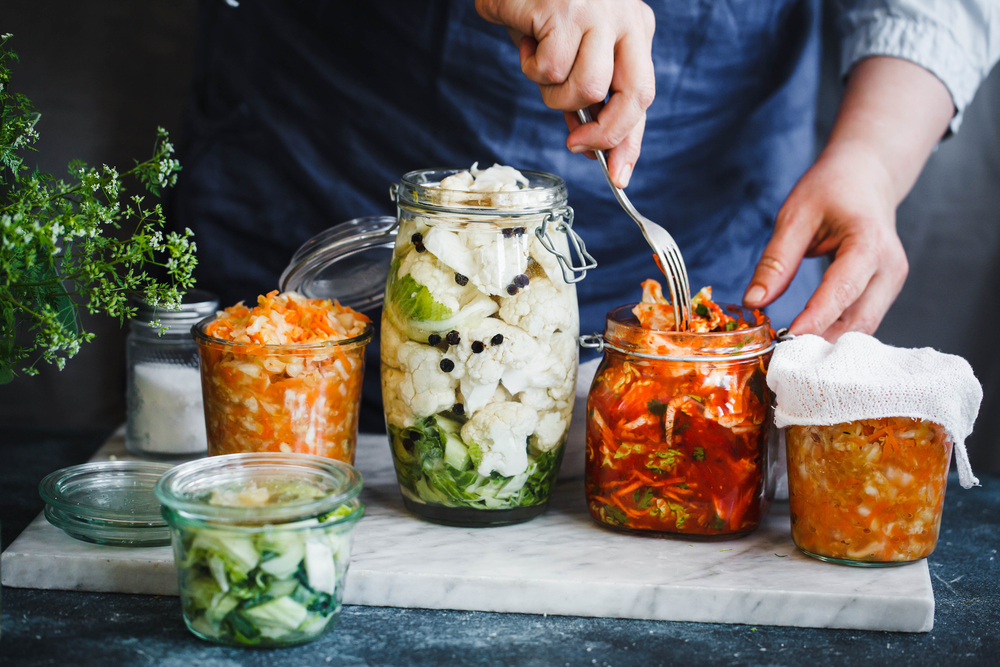
Consumers are paying closer attention to what they put in their bodies. Fermented foods are rising in importance as scientific studies reveal how our guts work with microorganisms, rather than against them. Fermentation in food processing isn’t new, but applications and the number of food products themselves are on the rise.
A Demand for Healthy Fermented Foods
We’ve depended on microorganisms for ages. Bread, beer, wine, cheese, vinegar — these are just a few examples of fermented foods dating back to prehistoric times. Of course, that list has only grown over time as humans have fine-tuned fermentation techniques.
What exactly is fermentation? In short, certain microorganisms can do something we can’t do on our own — convert carbohydrates into alcohols and other organic acids. Fermentation in food production means taking a raw ingredient or product and (under close observation) letting the microorganisms do their thing. They enjoy a meal, and we get countless food products.
How Has Fermentation Changed?
Much of the fermentation process has remained the same over the ages, but we’ve gotten smarter in how we obtain the right yeasts and bacteria to do the job for us. One of the more notable changes is genetically modified yeast that can produce a specific flavor. Scientists can even “program” certain yeasts to produce everything from gelatin (without an animal source) to steviol sweeteners (without stevia plants). We also have greater control over how and when we use microbes. Once the process is complete, the genetically modified yeast is stripped out which allows the potential for the resulting foods to be clean label.
Is My Food Alive?
Not necessarily. While some foods (yogurt, for example) qualify as “probiotics” that deliberately include live cultures for a healthy microbiome in your stomach, many fermented foods undergo a process to remove the organisms. Some are heat-treated to “de-activate” the organisms. Food scientists are incredibly deliberate when it comes to the use of microbes in food production. In other words, nothing is living in your food that isn’t supposed to be.
What’s Next for Fermentation?
Much depends on public perception and whether consumers will continue to embrace fermentation. Here are a few examples of mainstream innovations involving fermented foods:
- Ginkgo Bioworks is on the cutting edge of microbe production for use in the production of consumer-grade products. The self-described “organism company” specializes in leveraging microorganisms to do what modern technology can’t.
- Finless Foods creates “clean” and sustainable seafood by way of harnessing cellular biology. Basically, the company grows healthy marine animal cells in a lab rather than taking them from live fish.
- Modern Meadow has ventured outside of food production, using fermentation concepts to “biofabricate” leathers, wools and other products traditionally obtained from live animals.
Is PacMoore in the Fermented Food Space?
We are increasingly moving toward and into this space. As a food manufacturing company, we offer a broad range of specialty food services. Our team is progressively researching and understanding how the fermentation process can best be incorporated into our production of specialty and mainstream consumer products.
To better understand the contract food manufacturing services offered at PacMoore including extrusion spray drying, dry blending, consumer packaging, and more, contact us today.
Share this on Facebook, Twitter, LinkedIn, Google Plus, or email to a friend.
Click below to share:
 Hungry for more information about current food industry trends? Click here to check out our recent blog about upcycled foods!
Hungry for more information about current food industry trends? Click here to check out our recent blog about upcycled foods!




